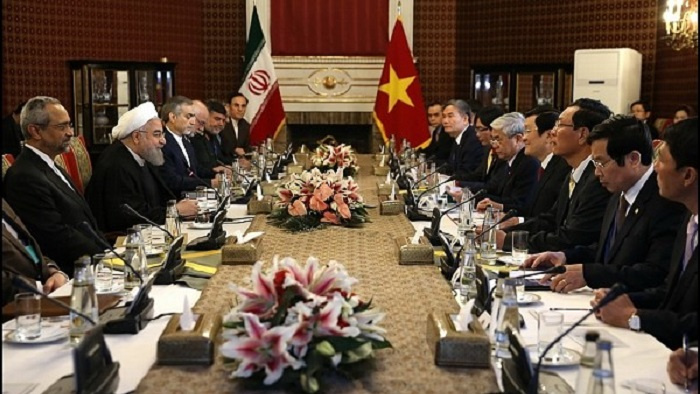Can Vietnam Reinforce Rouhani’s Strategic Balance Plan?

By: Azam Molaei
Two weeks after his tour across the Western Hemisphere that included Venezuela and Cuba, and culminated in his UN General Assembly speech, Hassan Rouhani is now traveling to Southeast Asia ‘to spread the message of Iranian diplomacy from East to West’. Vietnam, the new destination of Hassan Rouhani, is known for Iranians mainly for a prolonged war that dragged the United States into itself and drained it of energy and prestige. But for Rouhani, the country has other attractions.
Apart from its historical struggle with the US, the Socialist Republic of Vietnam has other experiences which make it similar to Iran: both countries are transitioning from a closed, state-run economy to a more open one, both have invested on nuclear energy, both have struggled to join the World Trade Organization, and both are making efforts to turn into regional hubs.
Vietnam’s position as a member of the Association of Southeast Asian Nations (ASEAN), an alliance of 9 countries with a total population of 500 million, provides Iran a golden opportunity, not only due to its large market, but also for helping Iran to play a positive role in establishment of security and stability in Southeast Asia. Fisheries and power plants are two main areas where Tehran and Hanoi can collaborate. Plus, Tehran can export petrochemical products and technological knowhow to this southeast Asian nation.
Rouhani’s visit to Vietnam will not merely focus on economy however. Visiting the Southeast Asian country only a few days after visiting Cuba and Venezuela signals a strategic approach in his administration. Despite significant improvement of ties between Iran and the West following the nuclear deal, non-delivery of promises by the Western side, and setting conditions for improvement of ties, occasionally bordering on intervention in Iran’s policies, has brought Hassan Rouhani to the conclusion that Iran needs a ‘strategic balance’ in its foreign relations: expanding diplomatic relations with the West AND East, and reaping the fruit of collaboration with each side when needed.
Shortly after the historical nuclear agreement, Rouhani took a ten-day tour of Europe to visit Italy and France and sign MoUs in transportation, aviation and auto manufacture sectors. He has also tried to reinforce ties with China, Russia, and India; countries whose foreign policy is closer to Iran’s regional and international vision.
Nonetheless, Rouhani’s strategy seems to be not limited to interaction with global powers. Despite global powers’ influence, there lies a price in getting close to them. Thus, Rouhani has decided to take a chance also with middle powers in order to expand Iran’s market, power, and influence. Regional middle powers could be better options for expansion of ties due to their mutual need to develop their economic and diplomatic relations with other countries. Their status in their own regional can also turn them into reliable channels for bargaining with other countries of the same region. With its dynamic, developing situation, Vietnam not only brings further balance to the East-West dichotomy in Iran’s diplomacy, but also helps Iran carve itself a niche in Southeast Asia and its influential regional organizations.
* Azam Molaei is a foreign relations scholar focusing on Iran’s relations with great powers, and Arab-Israeli affairs.

